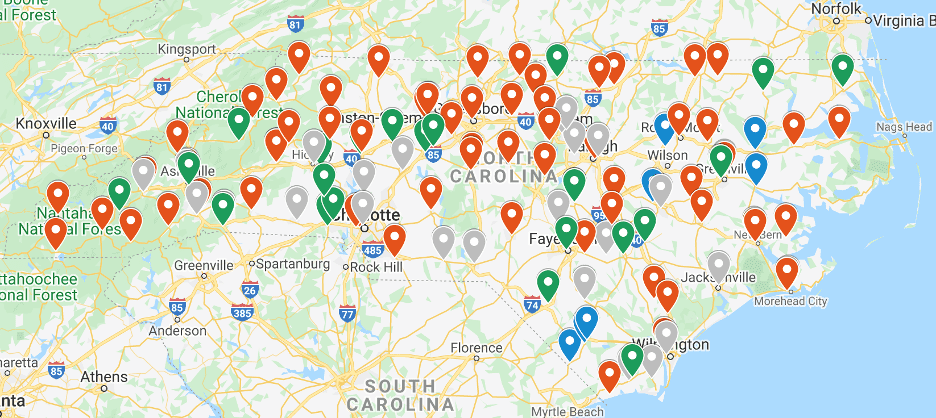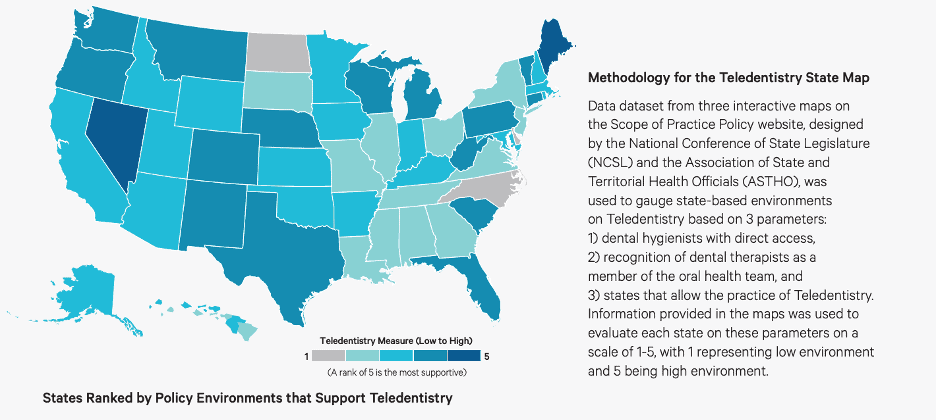COVID-19 has exposed many holes in North Carolina’s health care delivery system, and oral health care is no exception. The communities who have been hit hardest by the economic impacts of the pandemic are also most likely to struggle with access to vital testing, treatment, and care. Communities of color are disproportionately impacted because of deeply embedded systemic racism and economic barriers to the health care we all need.
Dental Care is a Critical Need
The oral health system in North Carolina is poorly structured, ensuring that some people take routine dental care for granted, while others have no access at all. The policy and insurance coverage landscape in our state means that many families struggle to see a dentist when they need one. Far too many people lack preventative care and treatment options, and are forced to live with pain and unmet needs which could lead to long-term health consequences – this is particularly true in rural communities that lack dental services, low-income communities, and communities of color. (Read more on the importance of oral health here.)
A 2015 statewide sample of kindergartners¹ showed significant disparities in oral health: While only 2% of white children in Wake County experienced untreated tooth decay, more than 1 in 3 Native American children in Robeson County experienced untreated decay. The research is well-established that these oral health disparities lead to ultimately higher costs for families and more complex health issues down the road. Tackling tooth decay early and with urgency is key.
¹NC Department of Health and Human Services, Division of Public Health, Oral Health Section. (2017). Kindergarten Oral Health Status, County Level Summary Grouped by Region, 2015-2016.
How COVID-19 Has Impacted Dentistry
COVID-19 is shining a light on the inefficiencies and inequities in our current system – and is having a significant impact on both providers and patients. It also presents an unique opportunity to examine the way we get oral health care to people — and take action to address systemic failures in a way that benefits North Carolina children and families in the long term.
The American Dental Association (ADA) has issued ongoing guidance to dental providers, to ensure that dental services can reopen in a way that ensures patient and provider safety and reduces risk. Nonetheless, many practices across the state have closed, while others are providing more limited services. (See map below — gray markers indicate closure, red markers indicate emergency services only, and green markers indicate open for all services.) Some are likely to close permanently.

For patients, this means that preventive care is now even harder to get – which is likely to result in increased and more costly oral health problems down the road.
Already, 74 of North Carolina’s 100 counties are designated Dental Health Provider Shortage Areas (HPSAs). In most of the state, people already had limited access to in-person oral health compared to metro areas like the Triangle and Charlotte. On top of that, there is a growing shortage of dentists. Our state currently ranks 37th in the country for the number of dentists per capita. This low ranking is largely driven by how few providers set up and sustain their practices in rural counties.
Teledentistry Can Remove Barriers to Access
Teledentistry is a tool that offers hope for improving access. Patients can consult with a dentist through video or phone to determine what their options are to solve oral health issues and make decisions about treatment. The use of teledentistry during this global health crisis, as well as in the future, can open up access in rural, underserved areas of the state.
Currently North Carolina is vastly behind in the use of teledentistry. While state law does not prevent the use of teledentistry explicitly, there is currently no permanent reimbursement model for Medicaid patients to receive teledental care. Further, the payment rate for these services is prohibitively low. NCDHHS recently issued a temporary modification of its teledentistry policy with new billing codes for providers to use, but as of now, those changes will not be permanent. (Read more insights on the benefits of teledentistry from a recent discussion of health care providers from the UNC Teledentistry Symposium held in March.)
Most other states allow hygienists to practice, in remote consultation with a dentist. To expand the use of teledentristry, North Carolina should do the same, so that patients can access preventive care more easily in more remote areas of the state.

Ways You Can Take Action
The pandemic presents an opportunity to dramatically transform the oral health system in North Carolina. COVID-19 is highlighting what we’ve long understood about how oral health is simply not accessible to children and families in many parts of North Carolina. By expanding health coverage, ensuring dental practices stay open and are well-staffed, and expanding the use of teledentistry, we could take significant strides towards breaking down some long-established barriers, and getting care to those who need it.
To see how others around the state are speaking up, organizing, and advocating for expanded oral health access, we encourage you to read the recap from last month’s Oral Health Day event, hosted by the NC Oral Health Care Collaborative.



